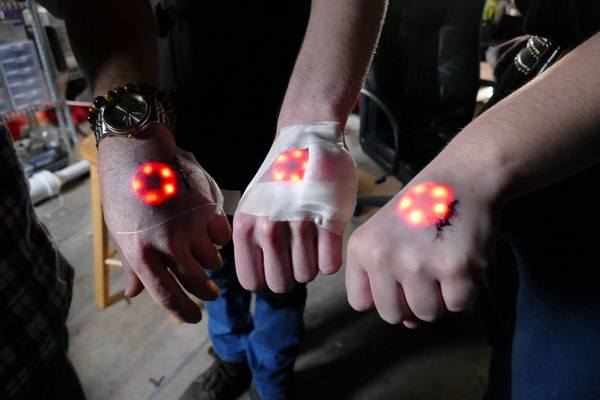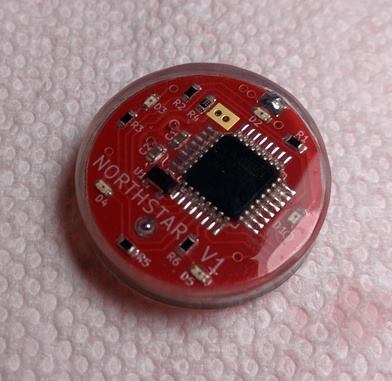LEDinside covered many different LED applications over the course of the last few years, but few have taken it “skin-deep”.
Pittsburgh-based biohacking collective Grindhouse Wetware recently premiered their latest LED chip implant for illuminating tattoos at this year’s Dusseldorf’s Cyborg Fair, reported Motherboard.
 |
|
Grindhouse Wetware members with their Northstar V1 LED implants. (All photos courtesy of Grindhouse Wetware via Facebook) |
The process can be slightly uncomfortable involving a minor surgery, and definitely not for the faint hearted. Jowan Österlund, who operates Federal City tattoo and piercing studio in Linköping, Sweden, sterilizes the client skin for disinfection purposes before making an incision with a small scapel to slip in the LED implant, Northstar V1, before stitching up the test subject. For the premiere the implant was tested on Grindhouse Wetware member Shawn Sarver. The whole process takes only 15 minutes. (The Motherboard report has a graphic documentation of the procedure, which can be slightly bloody to view.)
 |
|
Northstar V1 LED seen up close. |
The Northstar V1 implant, is the second generation implant developed by Grindhouse Wetware, which is about the size of two euro coin, lights up when a magnetic device is placed above the LED object implanted under the skin. Five red LEDs fire up when the magnet is close by, creating a strange red lighting effect. Saver projected the red LEDs can light up 10,000 times.
The new generation implant is much smaller than the Circadia 1.0 computer chip prototype implanted into Grindhouse Wetware cofounder Tim Cannon’s arm two years ago. Not sure if the device was safe enough to introduce to the masses, Cannon used himself as a guinea pig.
Asked why they developed the chip, Saver responded: “You know, people from the biohacking community wanted it. They contacted us because they wanted to light up their tattoos. That’s how we generate our implants, we let the community inspire us.”
The biohackers remain a minority at the moment. Their implantations at Dusseldorft do not adhere to the Hippocratic Oath or any other modern medical ethics, hence it has been difficult for them to gain backing from the medical community.
Instead body piercers and tattoo artists have been mostly responsible for the implants. Still, Grindhouse Wetware is fairly optimistic about the technology and hope to add IoT features into Northstar 2.0 chip in the future. For instance developing an implant that recognizes hand gestures and sends data to smartphone to open the car door or other devices. For further details please see here.













